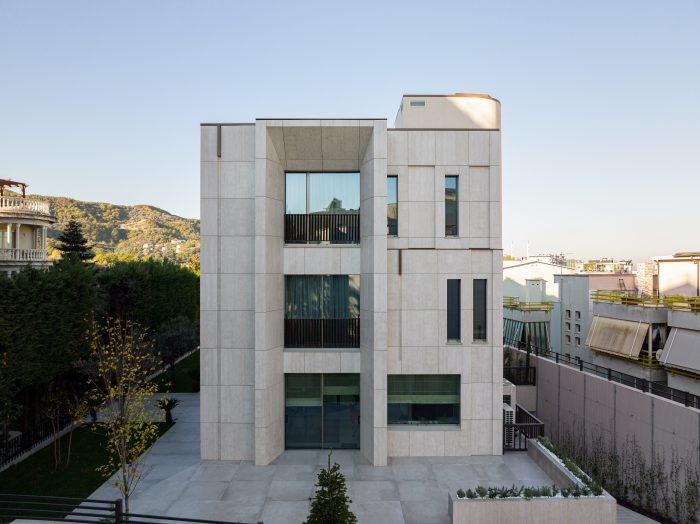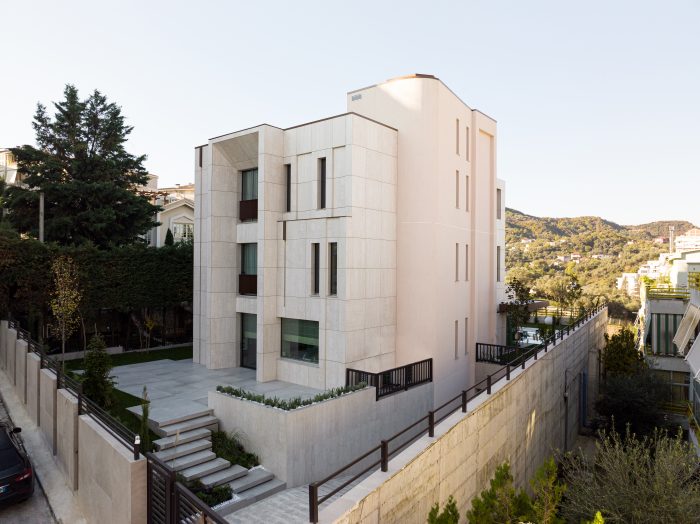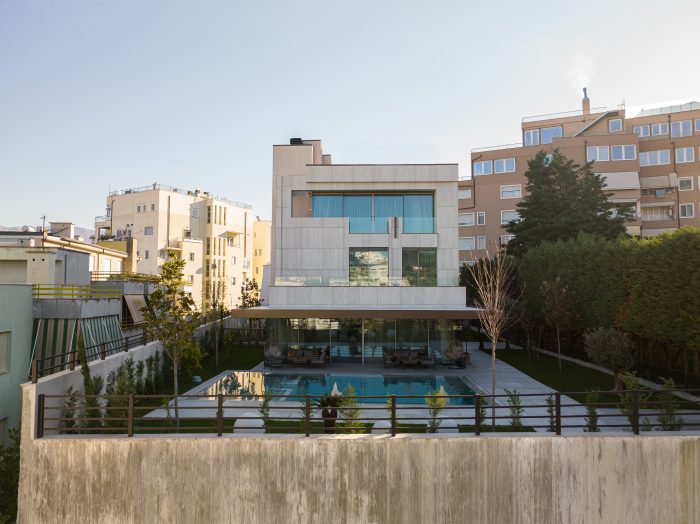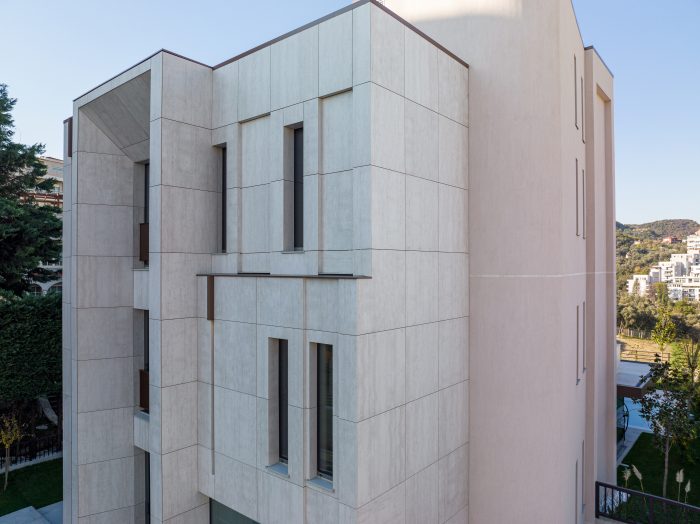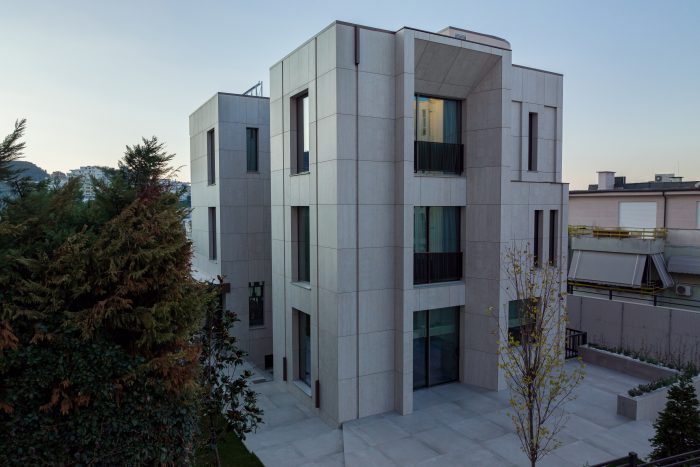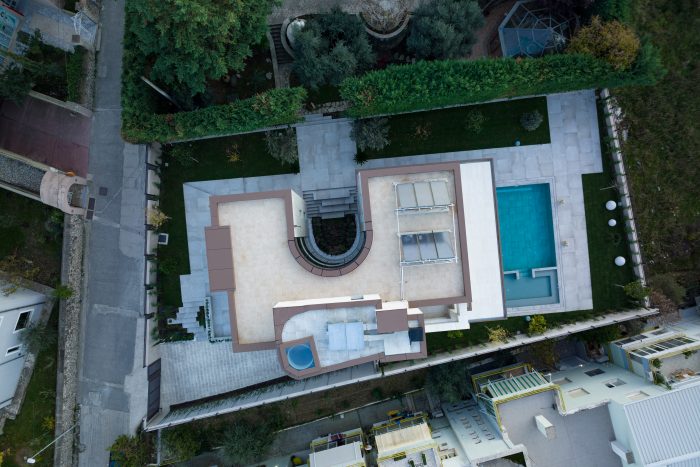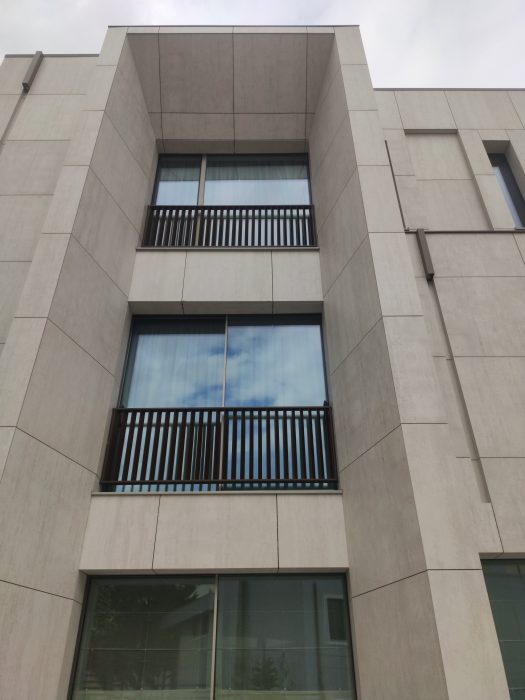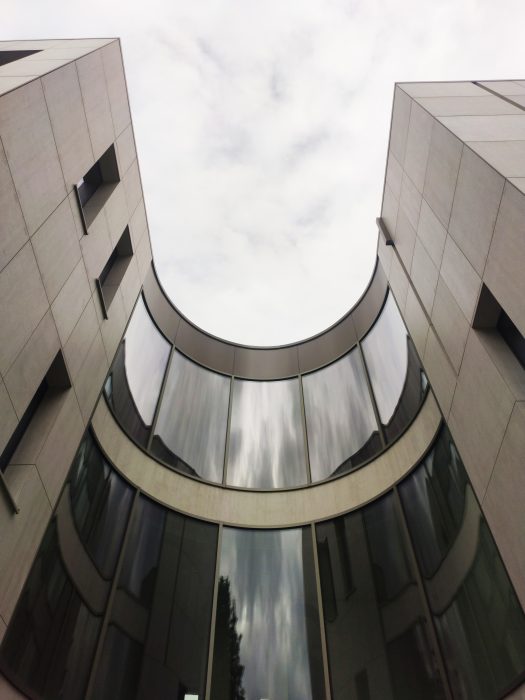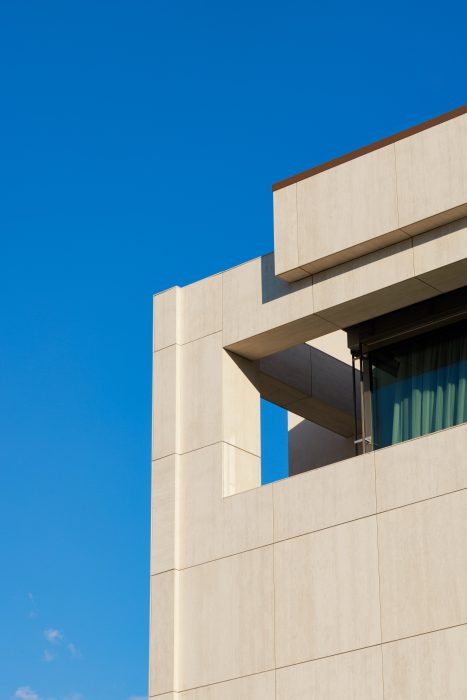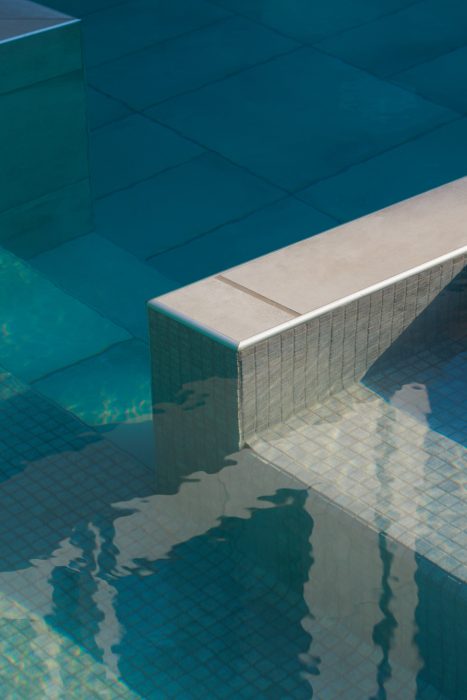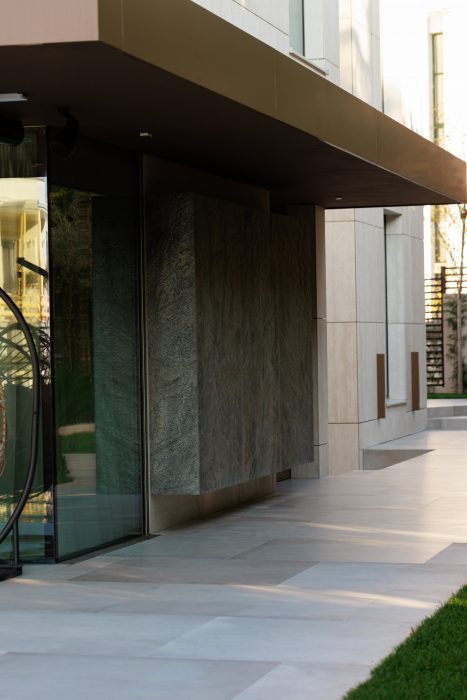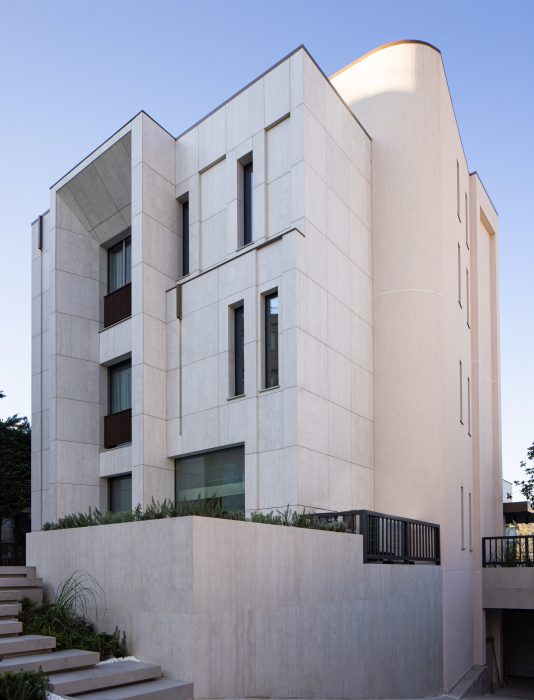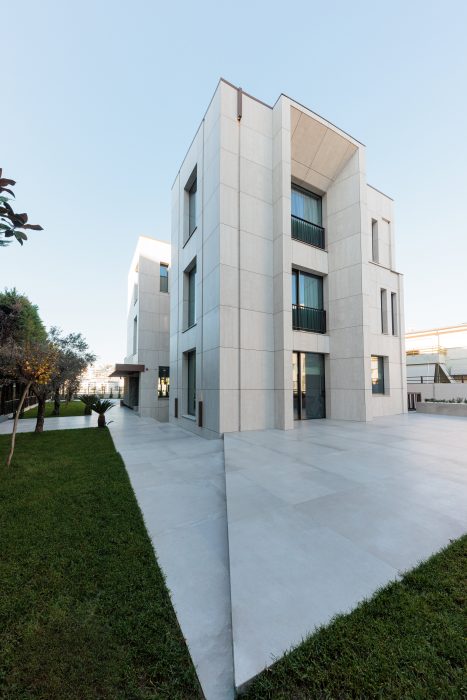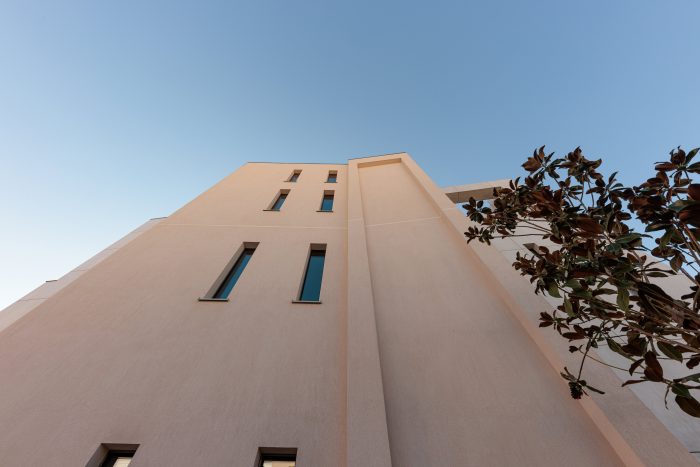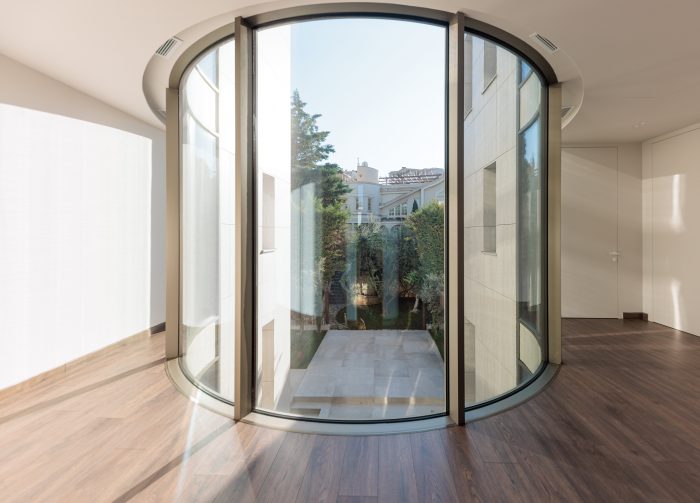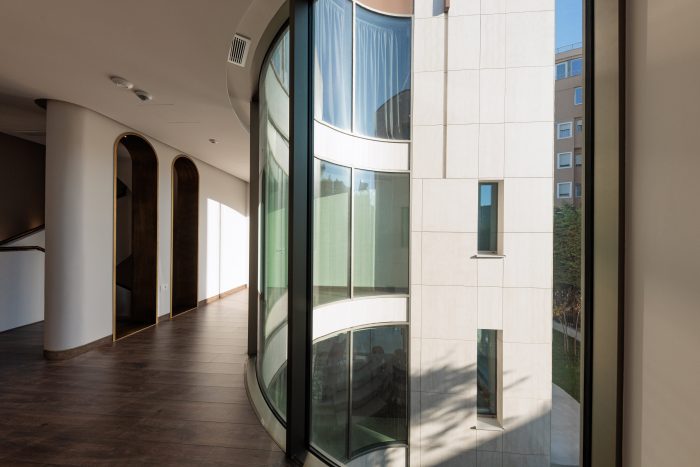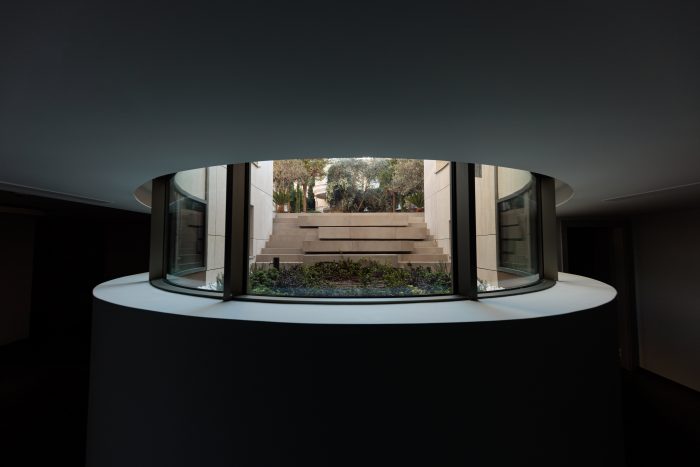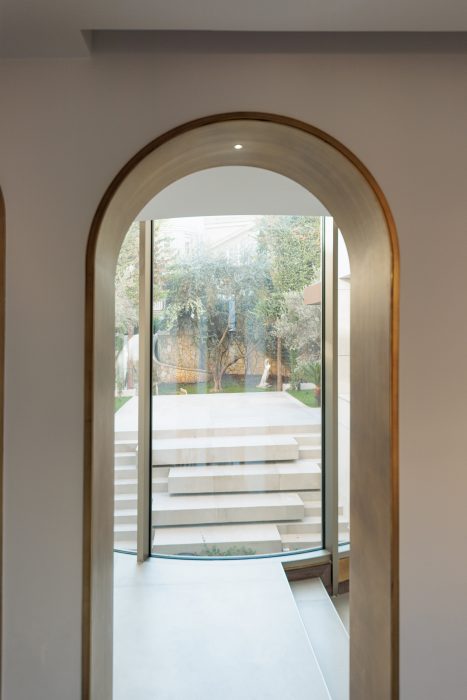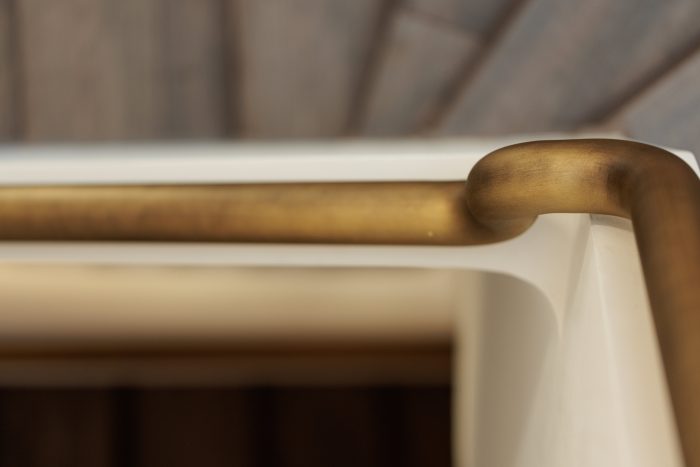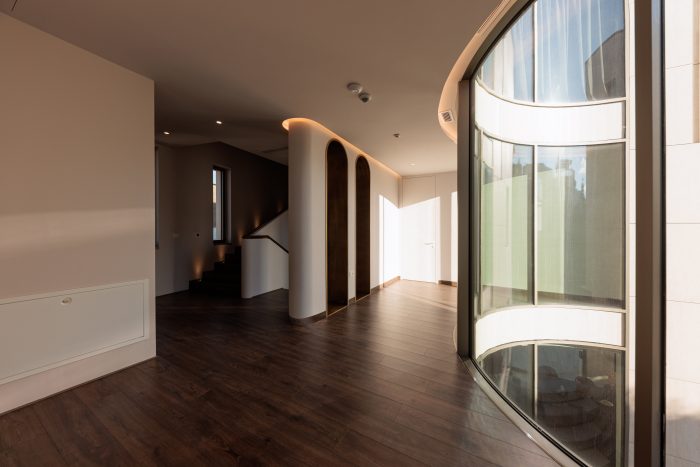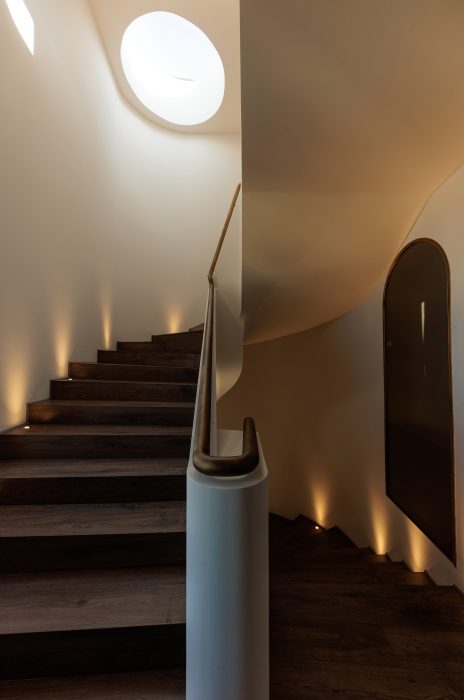Të dhëna mbi projektin
-
Studio
Dhiamandi Studio
-
Faqja e Studio
-
Arkitekti
Joana Dhiamandi
-
Faqja e Arkitektit
-
Tipologjia
Residential Architecture
-
Statusi
Completed
-
Viti i ndërtimit
2018-2022
-
Sipërfaqja
875 m2
-
Photography
Ardit Istrefi
Përshkrimi
Vila Dobi is located next to the artificial lake of Tirana and was planned to be a spacious, modern-day villa for a modern family. Away from the hustle-bustle of the traffic and nuisance of busy streets, this project is built in a lush green, pollution, and tall-buildings-free area near Peti street, Farka.
The construction of this villa on uneven terrain has been a challenge since the beginning. The building is developed three floors above ground with a basement floor on a relatively flat site with a slight slope. The plot the house is situated in follows a narrow linear shape with a west-east direction. Influenced by the plot shape and the technical indicators, the building is shaped as a narrow linear volume. By being placed almost at the beginning of the property, a small inviting courtyard is created at the house's entrance, leaving room for a bigger backyard with a pool to the west that serves as an open living room for the family. The architectural language of the dwelling is characterized by regular perpendicular shapes, while the circular atrium smoothes the movement inside. This project is spread over a land of 1200 square meters with a total built surface of more than 875 square meters.
The uneven terrain has been turned into a modern hilly slope, and the building is located near the highway. However, to enable the client to enjoy peace, the villa does not have a direct exit to the highway. The project became a huge success as the construction plan turned into a real-life public realm with three levels where the ground floor is 1.5 meters from the street level and has minimal direct contact with the road. The project was challenging as we had to ensure that the basement received natural ventilation, with each floor designed per the client's preference. With ample parking space and a lush green passageway limited by a wall for security, our team worked together and implemented the stakeholders' feedback and inputs at each stage. The southern part with railings, the western and northern sides of the land are enclosed with a 3-meter high wall, and the eastern wing with its metal gate ensures sustainability and security. We have leveraged the construction criteria and technology to create a user-centric architectural solution with high functionality and upgraded living style. This urbanistic project plans to improve a natural landscape making it more livable and sustainable.
The design of the building is driven by the content and its urban context. The white volume with various programs is stacked to form a structure incorporating several voids that become terraces or spaces into which windows and planters are slotted. The entrance is not only a space for taking off the shoes; we aimed to create a semi-covered space for various events that extends to the garden. Some rooms open onto terraces that seamlessly extend the living areas onto the building's exterior. Others incorporate large windows that enable daylight to penetrate the spaces while achieving an insular sense of privacy. The lowest level – basement, contains a leisure and wellness area along with the technical room; the ground floor mainly accommodates the public domain of the house, and the upper levels (the first and second floor) have private bedrooms. The interiors are made of white wall surfaces and dark solid wood floors. The layout of the spaces leaves enough room for free circulation between the furniture and allows for an individualized reading of each piece. Boards and furniture are made of wood and solid surfaces to warm the white backdrop. The kitchen at the rear of the living room features a stone-like counter. The facades are clad in a puzzle of whiteboards of hanging panels, interrupted by recessed windows of varying dimensions set at different heights to frame views of the surrounding mountains. The wood-like surfaces surrounding the windows introduce a warm contrast and interrupt the uniform and homogenous facade. Beneath the "wrapping" of the house, a thermal insulation component system ensures the energy efficiency of the building. The façade panels and materials in use meet the latest technical requirements in energy efficiency, noise, and fire protection.
The functional program is organized in a compact building.
The client commissioned a house to provide accommodation for a multi-generational family. Besides typical spaces for the family, the house should accommodate other amenities; a pool, wellness, and playrooms for the kids. The most prominent space in the home should be the social area. Connected with the unified dining and living rooms, the kitchen should be spacious and communicate with the living room, which should be connected with the semi-covered space belonging to an outdoor area that allows the living room area to expand into the exterior. Regarding the private areas, four bedrooms were commissioned: 1 en suite master bedroom and 2 children's bedrooms, and a playroom with a respected bathroom on its floor. It was decided that the program would be stacked on multiple levels due to the restraints of the site.
The kitchen and living areas are placed on the ground floor in an ambient space oriented to the southeast. They are differentiated through a slight level difference. Simple colors and materials have been chosen to emphasize the clean volumetric of the building. Also, there is a toilet to the north, next to the elevator and stairs on the ground floor.
At the heart of the home is the glass atrium, where the white sculptural stairs set on top of each other define an axis for vertical circulations around which all spaces are organized and full of natural light. While on the ground floor, they release the living room from the private master bedroom; upstairs, they separate the master and secondary bedrooms and the common area on the top floor, according to the client's request.
PRACTISE PROFILE
DHIAMANDI STUDIO was established in 2021 as a brand-new architecture design, supervision, and construction business. Joana Dhiamandi, the company's founder, has vast experience and a history of leading large-scale initiatives for other multidisciplinary environments. By utilizing the most recent design advancements and cutting-edge technology, DhIAMANDI Studio hopes to provide the Albanian market with a contemporary concept that will ensure qualitative outcomes for both the present and future. The lead designer, Joana Dhiamandi, is an Architect, Glass Artist, and lecturer of Architecture and Design with a Ph.D. in Architecture and Urban Planning. Besides being a full-time lecturer in the Department of Design, she has conducted her Ph.D. studies focusing on "Sacred Architecture. Analysis of the Bektashi Tekke in Albania". During the last decade, she has been involved in academia in a rather complex and multi-stakeholder environment as Vice Dean of the Faculty of Research and Development and further on as the Deputy Head of the Department of Art & Design at POLIS University, having under her responsibility the coordination of several activities, projects, and tasks with academic and administrative character. Joana has been actively involved as a member of civil society in Albania, also working to engage communities and develop a common platform for discussion in architecture and design. And at the same time, an element that she considers vital in terms of architecture and design is creating a unique human experience in time and space. For the last year, she has served as cultural heritage advisor next to the Minister of Culture in Albania as part of the LEAD Albanian Fellowship Program. This year, she has been the project coordinator of the Berat Management Plan, a World Heritage Site protected by UNESCO.
Vendndodhja
Tirana, Tirana, Albania

